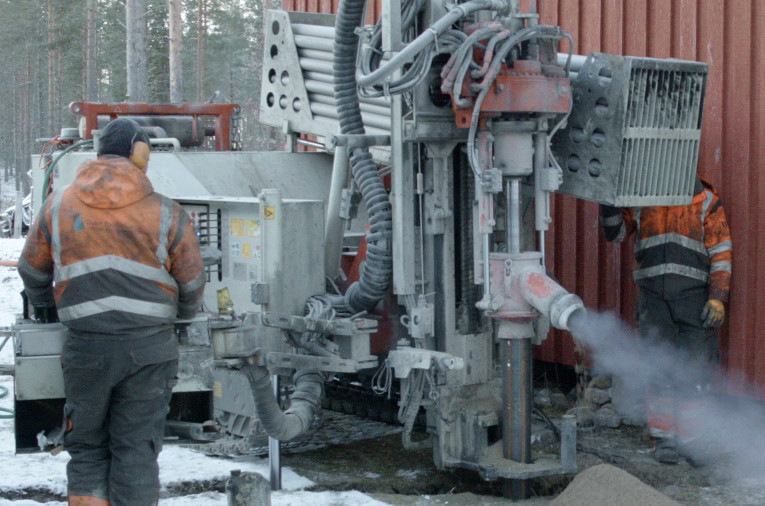Report on an Agricultural Nutrient Management Initiative and its Contribution to Sustainable Development Goals
Project Overview
An agricultural project in Marshall County, Illinois, demonstrates a practical application of environmental stewardship through the construction of a woodchip bioreactor. The initiative, undertaken on the farm of Ethan Koehler, is designed to mitigate nutrient loss from cropland and directly contributes to several United Nations Sustainable Development Goals (SDGs).
- Technology: Woodchip Bioreactor
- Dimensions: 11-by-44 feet, 5 feet deep
- Scope: Manages water drainage from approximately 16 acres of cropland
- Objective: To capture and remove nitrates from agricultural runoff before it enters local waterways.
Alignment with SDG 6: Clean Water and Sanitation
The primary function of the bioreactor is to enhance water quality, a core target of SDG 6. Inside the system, a natural denitrification process occurs where microbes, fueled by the carbon in woodchips, convert dissolved nitrates in the water into harmless nitrogen gas, which is then released into the atmosphere. This process directly supports SDG Target 6.3 by reducing pollution and minimizing the release of chemicals into water bodies, thereby improving ambient water quality.
Broader Environmental Impact and Contribution to SDGs 14 & 15
The project’s benefits extend beyond water quality, contributing to the protection of aquatic and terrestrial ecosystems.
- SDG 14 (Life Below Water): By reducing nitrate loads entering waterways, the bioreactor helps prevent nutrient pollution (eutrophication), which can cause harmful algal blooms and oxygen-depleted “dead zones.” This action is crucial for protecting and restoring aquatic ecosystems, aligning with SDG Target 14.1 to prevent and reduce marine pollution from land-based activities.
- SDG 15 (Life on Land): The bioreactor is part of a comprehensive approach to sustainable land management on the farm. Mr. Koehler has also implemented other edge-of-field practices, including buffer strips, pollinator habitats, and filter strips. These measures collectively contribute to halting biodiversity loss and protecting terrestrial ecosystems, in line with SDG Target 15.5.
Strategic Framework and Performance
This initiative operates within the framework of the Illinois Nutrient Loss Reduction Strategy (NLRS), which aims to reduce nitrogen and phosphorus runoff statewide. The bioreactor serves as an edge-of-field practice that complements in-field nutrient management strategies known as the “4Rs” (right source, right rate, right time, right place).
- Performance Metric: Research on similar bioreactor installations established through this partnership shows an average nitrate load reduction of 27%.
- Strategic Alignment: This level of performance is consistent with the goals set forth by the NLRS, demonstrating the technology’s effectiveness in achieving state-level environmental targets.
Multi-Stakeholder Collaboration for SDG 17: Partnerships for the Goals
The successful implementation of this project exemplifies SDG 17, which emphasizes the importance of partnerships to achieve sustainable development. The initiative is a result of a robust collaboration between multiple stakeholders from the public, private, and academic sectors.
- Landowner: Ethan Koehler
- Industry Associations: Illinois Land Improvement Contractors Association (ILICA), Illinois Farm Bureau (IFB)
- Research & Education: University of Illinois, Illinois Nutrient Research and Education Council (NREC)
- Governmental Programs: Environmental Quality Incentives Program (EQIP)
This multi-stakeholder model is vital for sharing knowledge, resources, and technology to advance sustainable agricultural practices and achieve broader environmental objectives.
Analysis of Sustainable Development Goals in the Article
1. Which SDGs are addressed or connected to the issues highlighted in the article?
-
SDG 6: Clean Water and Sanitation
- The article’s central theme is the use of a woodchip bioreactor to improve water quality. The technology is designed to “begin capturing nitrogen” and “take some of that nitrate out of the water supply,” directly addressing the goal of cleaner water resources.
-
SDG 14: Life Below Water
- By capturing excess nitrates, the system prevents nutrient pollution from entering “a nearby waterway.” Nutrient runoff is a primary cause of eutrophication, which harms aquatic ecosystems, so this practice directly contributes to protecting life below water.
-
SDG 2: Zero Hunger
- The article discusses the bioreactor within a broader context of sustainable agriculture, including the “4Rs” of nutrient management. These practices aim to make food production more sustainable and resilient, which is a key component of SDG 2, particularly its targets related to sustainable agricultural systems.
-
SDG 15: Life on Land
- The farmer, Ethan Koehler, is mentioned as having implemented other practices such as “buffer strips, pollinator habitats and filter strips.” These actions directly support the health of terrestrial ecosystems, conserve biodiversity, and protect land resources.
-
SDG 17: Partnerships for the Goals
- The project is not an individual effort but a result of a “bioreactor partnership involving ILICA, IFB, University of Illinois, Illinois Nutrient Research and Education Council (NREC) and the Environmental Quality Incentives Program.” This multi-stakeholder collaboration to achieve an environmental goal is a clear example of SDG 17 in action.
2. What specific targets under those SDGs can be identified based on the article’s content?
-
Target 6.3: By 2030, improve water quality by reducing pollution.
- The bioreactor’s function is to convert nitrate into inert nitrogen gas, thus reducing chemical pollution from agricultural runoff. The article states the goal is to “take some of that nitrate out of the water supply,” directly aligning with this target.
-
Target 14.1: By 2025, prevent and significantly reduce marine pollution of all kinds, in particular from land-based activities, including… nutrient pollution.
- The article focuses on reducing “nitrate load” from “tile-drained cropland,” a land-based activity. This action is a direct measure to prevent nutrient pollution from reaching downstream water bodies.
-
Target 2.4: By 2030, ensure sustainable food production systems and implement resilient agricultural practices… that help maintain ecosystems.
- The use of edge-of-field practices like bioreactors, alongside the “4Rs” nutrient management strategy, represents the implementation of resilient and sustainable agricultural practices designed to mitigate environmental impact and maintain ecosystem health.
-
Target 15.5: Take urgent and significant action to reduce the degradation of natural habitats, halt the loss of biodiversity…
- The farmer’s implementation of “pollinator habitats” is a specific action aimed at supporting biodiversity and mitigating the degradation of natural habitats on agricultural land.
-
Target 17.16: Enhance the global partnership for sustainable development, complemented by multi-stakeholder partnerships that mobilize and share knowledge, expertise, technology and financial resources…
- The article explicitly names the partners (ILICA, IFB, University of Illinois, NREC, EQIP) who are working together, sharing expertise and resources to research and install bioreactors, perfectly illustrating this target.
3. Are there any indicators mentioned or implied in the article that can be used to measure progress towards the identified targets?
-
Percentage of nitrate load reduction
- The article provides a specific, measurable indicator: “research has shown an average nitrate load reduction of 27% across installations.” This quantifies the effectiveness of the bioreactors in reducing water pollution.
-
Adoption of sustainable agricultural practices
- The article implies progress can be measured by the adoption of these technologies. Indicators include the number of bioreactors installed, the total acreage served by these systems (e.g., “16 acres of tile-drained cropland” for this one), and the implementation of other practices like “buffer strips, pollinator habitats and filter strips.”
-
Alignment with regional environmental strategies
- Progress is measured against established goals. The article notes that the 27% reduction “aligns with goals outlined in the Illinois Nutrient Loss Reduction Strategy (NLRS),” which serves as a benchmark and an indicator framework for nutrient reduction efforts in the state.
4. Create a table with three columns titled ‘SDGs, Targets and Indicators” to present the findings from analyzing the article.
| SDGs | Targets | Indicators |
|---|---|---|
| SDG 6: Clean Water and Sanitation | Target 6.3: Improve water quality by reducing pollution. | Average nitrate load reduction of 27% in water from treated cropland. |
| SDG 14: Life Below Water | Target 14.1: Prevent and significantly reduce nutrient pollution from land-based activities. | Installation of systems that capture excess nitrates before they enter waterways. |
| SDG 2: Zero Hunger | Target 2.4: Implement resilient agricultural practices that help maintain ecosystems. | Implementation of edge-of-field practices (bioreactors) and the “4Rs” nutrient management system. |
| SDG 15: Life on Land | Target 15.5: Reduce the degradation of natural habitats and halt the loss of biodiversity. | Creation of buffer strips, filter strips, and pollinator habitats on farmland. |
| SDG 17: Partnerships for the Goals | Target 17.16: Enhance multi-stakeholder partnerships that mobilize and share knowledge and expertise. | Active collaboration between ILICA, IFB, University of Illinois, NREC, and the Environmental Quality Incentives Program. |
Source: newsbug.info







